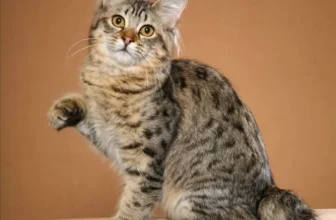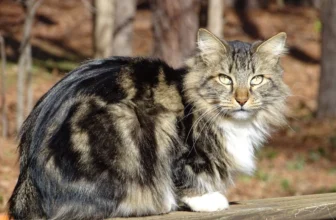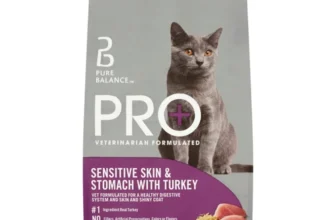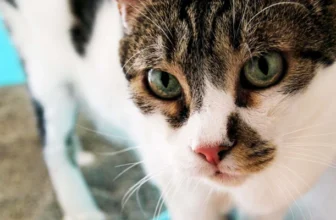As a cat owner, it can be distressing to learn that your furry friend may be prone to genetic disorders. Unfortunately, this is something that American Bobtail cat owners need to be aware of. While American Bobtails are known for their playful and affectionate nature, they are also susceptible to certain genetic disorders that can impact their quality of life. This article aims to provide an in-depth guide on common genetic disorders in American Bobtail cats and how to recognize them. By understanding these disorders and their symptoms, you can take proactive steps to ensure your cat receives the necessary care and treatment.
What Are Genetic Disorders?
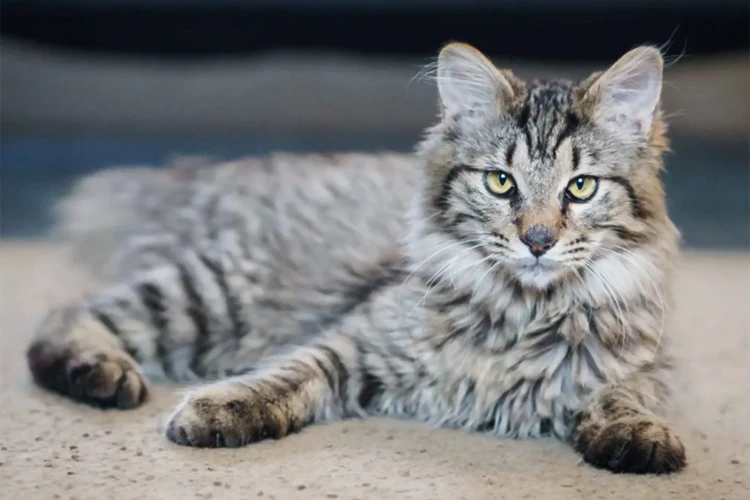
Understanding genetic disorders and their impact on American Bobtail cats is essential for any owner. Genetic disorders are caused by abnormalities in an individual’s genetic makeup, which can result in health issues throughout their lifetime. These disorders can manifest in various ways and can be passed down from generation to generation. Identifying the signs and symptoms of genetic disorders in American Bobtail cats, as well as how to prevent or treat them, is crucial for maintaining their health and quality of life. In the following sections, we will delve into the details of common genetic disorders in American Bobtail cats and explore ways to recognize, manage, prevent, and treat them.
Defining Genetic Disorders
Genetic disorders are diseases or conditions caused by abnormalities in an individual’s DNA sequence, which may be inherited from its parents or arise spontaneously in the individual’s genetic code. These disorders may impact many aspects of an individual’s life, including their physical and mental health. American Bobtail cats are not exempt from genetic disorders with certain breeds being predisposed to certain disorders. It is important for cat owners to be aware of the potential for genetic disorders and to address any related issues promptly.
Here are some key points to consider about genetic disorders in American Bobtail cats:
- Genetic disorders are caused by abnormalities in an individual’s DNA sequence.
- They may be inherited or arise spontaneously in an individual’s genetic code.
- American Bobtail cats are not exempt from genetic disorders with certain breeds being predisposed to certain disorders.
- Genetic disorders may impact many aspects of an individual’s life, including their physical and mental health.
Understanding what genetic disorders are and how they can impact an American Bobtail cat’s health is an important step in managing the health of your pet. It’s a good idea to speak with a veterinarian who specializes in feline genetics to learn more about specific disorders that may impact your cat. This can help you make informed decisions about genetic testing and proactive steps to prevent or manage any potential genetic disorders in your cat.
To learn more about genetic disorders in American Bobtail cats, please visit /genetic-disorders-american-bobtail-cats/. If you are interested in taking steps to prevent genetic disorders in your cat, check out our helpful guide on /avoid-genetic-disorders-american-bobtail-cats/.
Common Genetic Disorders in American Bobtails
American Bobtail cats are generally a healthy breed, but like any other breed, they are susceptible to certain genetic disorders that could affect their overall well-being. It is important for cat owners and breeders alike to be aware of these conditions to ensure the best possible health outcomes for their feline companions.
Feline Lower Urinary Tract Disease (FLUTD) is one of the most common genetic disorders in American Bobtails. This disorder affects the urinary system of cats and can result in painful urination, blood in urine, and blockages. FLUTD can be genetic or triggered by other factors such as diet or stress.
Hypertrophic Cardiomyopathy (HCM) is another genetic disorder that affects the heart muscles of American Bobtails. This condition causes the heart walls to thicken, making it harder for the heart to pump blood effectively. HCM can lead to heart failure and sudden death, making early detection and treatment incredibly important.
Polycystic Kidney Disease (PKD) is a genetic disorder that affects the kidneys of American Bobtails. In this condition, cysts form in the kidneys, leading to kidney failure in severe cases. Early detection and management can help to slow down the progression of the disease.
Spina Bifida is a genetic disorder that affects the spine of American Bobtails. In this condition, the spinal cord does not fully develop, leading to mobility issues or the inability to control bodily functions. While this condition is rare, it can have a significant impact on the quality of life of affected cats.
Tail Abnormalities are also a common genetic issue that affects American Bobtails. These cats are known for their distinctive short tails, but some may have abnormalities such as kinks or crooks in their tails. While these abnormalities are often harmless, severe cases may affect the cat’s mobility and require medical attention.
It is important to note that not all American Bobtails will develop these genetic disorders, but being aware of them can help owners and breeders take steps to manage and prevent them. Regular check-ups and genetic testing can help with the early detection of these issues, providing the necessary time and guidance for treatments.
Additionally, responsible breeding practices can help reduce the likelihood of genetic disorders being passed down to offspring. The importance of this cannot be overstated, as it can prevent unnecessary suffering and ensure that American Bobtails can lead healthy, happy lives. To learn more about genetic testing and responsible breeding practices for American Bobtails, please visit /genetic-testing-american-bobtail-cats/ and /importance-responsible-breeding-genetic-disorders-american-bobtails-cats/>> management of feline medical issues can be found here /managing-american-bobtail-cats-genetic-disorders/.
How to Recognize Common Genetic Disorders in American Bobtails
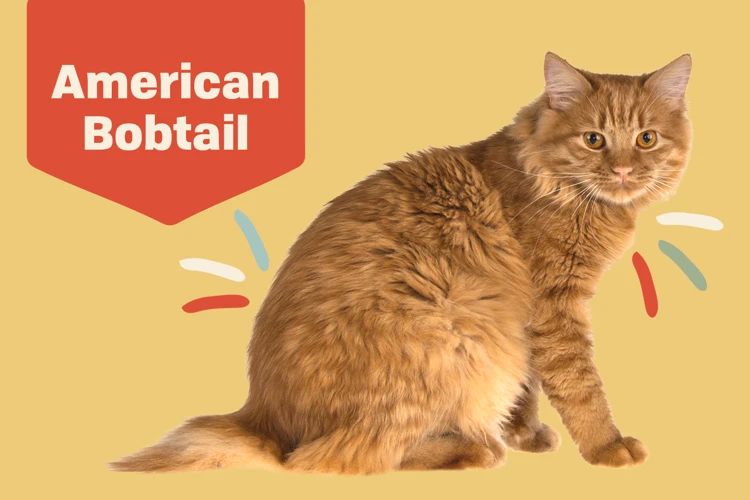
As a pet owner, recognizing the signs of common genetic disorders in American Bobtails is crucial for ensuring your furry friend’s well-being. It’s perplexing to see your pet suffering, but early detection can help address the issue more effectively. Below are some of the genetic disorders that American Bobtails are prone to, along with the telltale signs that will help you identify them. Keep in mind that some of the signs can also indicate other medical issues, thus it’s important to consult with a veterinarian for a professional diagnosis.
Feline Lower Urinary Tract Disease (FLUTD)
Feline Lower Urinary Tract Disease (FLUTD) is a common genetic disorder that affects American Bobtail cats. This condition can cause a variety of symptoms, including frequent urination, blood in the urine, painful urination, and blockages of the urinary tract. If left untreated, FLUTD can lead to serious health problems, including kidney damage and even death.
Some of the factors that can contribute to FLUTD include stress, obesity, and a diet that is high in magnesium and phosphorus. However, genetics also plays a significant role in the development of this disease.
Key symptoms of FLUTD to look for in your American Bobtail cat include:
- Frequent urination
- Blood in the urine
- Difficulty urinating or painful urination
- Loss of appetite
- Lethargy or weakness
If you notice any of these symptoms in your cat, it is important to seek veterinary care as soon as possible. Your vet can perform tests to diagnose FLUTD and recommend treatment options.
Treatment options for FLUTD in American Bobtails include:
- Medications to alleviate pain and inflammation
- Special diets that are low in magnesium and phosphorus
- Increasing water intake to help prevent blockages
- Surgery in severe cases
It is important to note that FLUTD is a chronic condition that often requires ongoing management. This means that it is essential to work closely with your veterinarian to ensure that your cat receives the proper care and monitoring to manage this condition effectively.
Prevention and management of FLUTD include:
- Feeding your cat a healthy, balanced diet that is low in magnesium and phosphorus
- Providing fresh water for your cat to encourage increased water intake
- Reducing stress in your cat’s environment, which can include providing ample space, litter boxes, and scratching posts
Regular check-ups with your veterinarian can help to detect any potential health problems early on, which can lead to more effective treatment options and better long-term health outcomes for your American Bobtail cat.
Hypertrophic Cardiomyopathy (HCM)
Hypertrophic Cardiomyopathy (HCM) is a common genetic disorder in American Bobtail cats that affects the heart muscles. It is a condition in which the walls of the heart become abnormally thick, which may cause the heart to pump less efficiently. This condition is caused by a genetic mutation that is inherited from the cat’s parents.
Symptoms of HCM
The symptoms of HCM may vary from cat to cat, and some cats may not show any symptoms at all. However, if your cat shows any of the following symptoms, it is important to take them to the veterinarian as soon as possible:
| Common Symptoms | Less Common Symptoms |
|---|---|
|
|
Diagnosis and Treatment of HCM
The diagnosis of HCM is usually made through a combination of physical examination, electrocardiogram (ECG), and echocardiogram. The ECG and echocardiogram allow the veterinarian to examine the structure and function of the heart in detail.
Unfortunately, there is no cure for HCM, but treatment can help manage the symptoms and slow the progression of the disease. Treatment may include medication to help regulate the cat’s heart rate and blood pressure, as well as a special diet to manage fluid build-up in the lungs and abdomen.
Prevention of HCM
As HCM is a genetic disorder, the best way to prevent it is through responsible breeding practices. If you are planning to breed your American Bobtail cat, it is important to have both the female and male cats tested for HCM before breeding them. By doing so, you can determine if either cat carries the gene mutation, and make informed breeding decisions to reduce the risk of passing on the mutation to their offspring.
HCM is a genetic disorder that affects the heart muscles of American Bobtail cats. It is important to recognize the symptoms of HCM and seek prompt veterinary care if your cat shows any signs of cardiac issues. While there is no cure for HCM, proper treatment can help manage the symptoms and slow the progression of the disease. Responsible breeding is an important factor in preventing HCM from being passed onto future generations of American Bobtail cats.
Polycystic Kidney Disease (PKD)
Polycystic Kidney Disease (PKD) is a condition that affects American Bobtail cats and many other breeds. It is a genetic disorder that causes the formation of fluid-filled sacs or cysts in the kidneys, which can ultimately lead to kidney failure. PKD can be an inherited disorder or can develop sporadically.
Causes of PKD
PKD is caused by a mutation in the PKD1 gene. This gene is responsible for producing a protein that helps control the growth and development of kidney cells. When this gene is mutated, it causes cells in the kidney to grow abnormally and form cysts.
Symptoms of PKD
Early stages of PKD are asymptomatic, which means that cats may not show any signs of this condition. As the cysts grow and multiply, they put pressure on the kidneys and interfere with the normal kidney function. The most common symptoms of PKD include:
– Increased thirst and urination
– Loss of appetite and weight loss
– Lethargy and weakness
– Vomiting and diarrhea
– Blood in urine
Diagnosis of PKD
PKD can be diagnosed through an ultrasound examination of the kidneys. This test can help detect the presence of cysts in the kidneys, their size, and number, providing valuable information about the severity of the condition. Genetic testing is also available to confirm the diagnosis and identify the specific gene mutation responsible for the disease.
Treatment of PKD
Unfortunately, there is currently no cure for PKD. Treatment is focused on managing the symptoms and slowing down the progression of the disease. This includes:
– Managing fluid and electrolyte balance with the use of special diets and medication
– Controlling blood pressure with medication
– Providing supportive care to cats with end-stage kidney failure, such as intravenous fluids and dialysis
PKD Prevention
PKD prevention requires responsible breeding practices. Cats with a known history of PKD in their lineage should not be bred, as it increases the likelihood of passing on the gene mutation to their offspring. Regular screening and genetic testing of breeding cats can help identify carriers of the PKD gene and prevent the spread of this condition.
| Causes of PKD | Symptoms of PKD | Diagnosis of PKD | Treatment of PKD |
|---|---|---|---|
| Possible gene mutation in PKD1 gene | – Increased thirst and urination | Ultrasound examination Genetic testing |
– Managing fluid and electrolyte balance with the use of special diets and medication – Controlling blood pressure with medication – Providing supportive care |
| – Loss of appetite and weight loss | |||
| – Lethargy and weakness | |||
| – Vomiting and diarrhea | |||
| – Blood in urine |
Spina Bifida
Spina Bifida is a genetic disorder that affects the development of an American Bobtail’s spine. It occurs when the spine and spinal cord do not form properly. This can lead to a range of symptoms, from mild to severe.
Some common symptoms of Spina Bifida include weakness or paralysis of the hind limbs, loss of bowel or bladder control, and abnormal gait. In some cases, there may be visible abnormalities in the spine or the skin covering the spine.
There are several different types of Spina Bifida, including occulta, meningocele, and myelomeningocele. Occulta is the mildest form of Spina Bifida and may not cause any noticeable symptoms. Meningocele and myelomeningocele are more severe forms, which can lead to life-long complications.
Here are some important things to know about Spina Bifida:
- Spina Bifida is a genetic disorder, meaning it is passed down from parent to offspring.
- The severity of Spina Bifida can vary greatly depending on the type and location of the spinal cord defect.
- If a cat is suspected of having Spina Bifida, a veterinarian will perform a thorough physical examination and may recommend additional tests like X-rays or an MRI.
- There is no cure for Spina Bifida, but supportive care can help manage symptoms and improve quality of life.
- In severe cases of Spina Bifida, surgery may be recommended to repair the defect and prevent further complications.
As with other genetic disorders, preventing Spina Bifida in American Bobtails involves responsible breeding practices. While there is no way to completely eliminate the risk of Spina Bifida, careful selection of breeding cats can help reduce the incidence of the condition in future generations. If you own an American Bobtail and suspect they may have Spina Bifida, be sure to consult your veterinarian for guidance on diagnosis and treatment.
Tail Abnormalities
Abnormalities in the tail of American Bobtail cats are often genetic in nature. One common tail abnormality is called “kinked tail syndrome”, where the tail is curved or kinked at one or more points. This is generally due to an underlying spinal cord abnormality. Owners may notice this condition at birth or shortly after, and it does not typically worsen over time. However, some kinks may cause discomfort or limited mobility and may require surgical intervention to correct.
Another abnormality that commonly affects American Bobtail cats is a tail that is too short or too stubby. This can be the result of a genetic mutation or trauma to the tail during development. Although it may not affect the cat’s physical health, it can be a cosmetic concern for some owners.
In rare cases, American Bobtail cats may be born with no tail at all. This is known as “manx syndrome” or “taillessness”, and it is caused by a genetic mutation that affects the development of the tail. Cats with manx syndrome may experience digestive problems or urinary issues due to the missing tail, and they may require additional medical attention.
It’s important for American Bobtail cat owners to keep an eye on their cat’s tail and look for any abnormalities. A vet should be consulted if any issues arise. In cases where genetic mutations are the cause of tail abnormalities, there may not be a cure, but the condition can be managed to ensure the cat’s comfort and well-being.
Diagnosis and Treatment of Genetic Disorders in American Bobtails
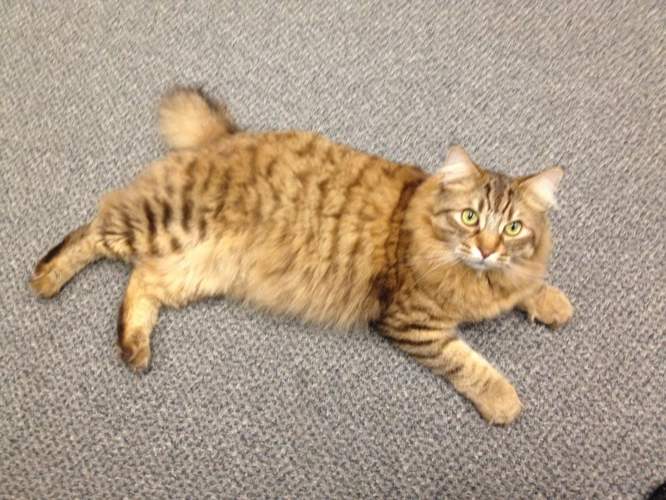
As a cat parent, it can be concerning to discover that your American Bobtail has a genetic disorder. However, it’s important to remember that with early diagnosis and proper treatment, many genetic disorders can be managed effectively. This section will cover the various diagnostic and treatment options available for American Bobtails with genetic disorders. From testing to medication and beyond, we’ll explore what you need to know to ensure your cat gets the care they need. Let’s jump right in.
Testing for Genetic Disorders
When it comes to testing for genetic disorders in American Bobtail cats, there are various options available. These tests can help to identify the presence of a genetic disorder before it starts to display any symptoms. Here are some of the tests that can be conducted for common genetic disorders in American Bobtail cats:
| Genetic Disorder | Testing Method |
|---|---|
| Polycystic Kidney Disease (PKD) | Ultrasound, DNA testing |
| Hypertrophic Cardiomyopathy (HCM) | Echocardiogram, DNA testing |
| Feline Lower Urinary Tract Disease (FLUTD) | Urinalysis, physical examination, culture and sensitivity testing |
| Spina Bifida | X-rays, CT scan, MRI |
| Tail Abnormalities | Physical examination, X-rays |
It is important to note that not all genetic disorders have a test available for them. In such cases, the only way to identify the presence of a genetic disorder is through a physical examination by a veterinarian or observing symptoms displayed by the cat.
It is recommended that all breeding cats undergo genetic testing to minimize the risk of breeding cats with genetic disorders. If a cat is found to have a genetic disorder, it is important to inform the breeder or owner of any related cats to prevent the disorder from being passed down to future generations.
Testing for genetic disorders, although not mandatory, is a responsible and proactive approach to ensuring the health and wellbeing of American Bobtail cats.
Treating Genetic Disorders
When it comes to treating genetic disorders in American Bobtail cats, it’s important to remember that not all conditions can be cured. However, there are several treatments available that can help manage symptoms and improve the cat’s quality of life. Here are some of the most common treatments:
- Medication: Depending on the disorder, medication may be prescribed to help manage symptoms. For example, in the case of Feline Lower Urinary Tract Disease (FLUTD), pain relief medication may be given to alleviate the cat’s discomfort.
- Surgery: Some genetic disorders may require surgical intervention. For instance, American Bobtails with tail abnormalities may need to undergo surgery to correct the issue.
- Dietary changes: In certain cases, changes to the cat’s diet may be recommended to help manage symptoms. For example, cats with Hypertrophic Cardiomyopathy (HCM) may benefit from a low-sodium diet.
- Lifestyle modifications: Making lifestyle changes can also be helpful in managing genetic disorders. For example, owners of cats with Spina Bifida may need to modify their cat’s living environment to make it more accessible for them.
- Supportive care: Depending on the disorder and its severity, supportive care such as physical therapy or even hospice care may be necessary.
It’s crucial to remember that treatment should always be carried out under the supervision of a qualified veterinarian. In some cases, a combination of treatments may be necessary to effectively manage a genetic disorder in an American Bobtail cat. While it may be disheartening to learn that your cat has a genetic disorder, with the right treatment, many cats are able to live happy and comfortable lives.
Preventing Genetic Disorders in American Bobtails
As a responsible American Bobtail owner, it’s important to take steps to prevent genetic disorders in your furry feline friend. With proper breeding practices and risk reduction strategies, you can help ensure that your American Bobtail lives a healthy and happy life. In this section, we’ll explore some best practices for preventing genetic disorders in American Bobtails, so you can take the necessary steps to protect your furry friend. Let’s dive in!
Breeding Best Practices
Breeding American Bobtail cats can be a challenging task, but there are some recommended best practices that breeders can follow to reduce the risk of passing on genetic disorders to their offspring. Here are some important breeding best practices for American Bobtail cats:
- Choose healthy cats for breeding: It’s essential to select only healthy cats for breeding. Breeders should thoroughly examine the medical history and health status of their breeding pair before mating them. They should also undergo physical exams to check for any underlying health conditions that may affect their offspring.
- Conduct genetic testing: Breeding cats with unknown genetic histories can lead to the offspring inheriting genetic disorders. It’s crucial to conduct genetic testing to identify carriers of genetic disorders. Tests for common genetic disorders in American Bobtail cats, such as feline lower urinary tract disease (FLUTD), hypertrophic cardiomyopathy (HCM), and polycystic kidney disease (PKD), can help breeders make informed decisions about their breeding pairs.
- Outcrossing with other breeds: Outcrossing involves breeding a cat with another breed to introduce new genes into the breeding pool. Breeding Bobtail cats with healthy cats from other breeds can help reduce the risk of inherited genetic disorders. However, caution should be taken not to over-rely on outcrossing as it could weaken the breed’s unique characteristics.
- Avoid inbreeding: Inbreeding can result in the accumulation of undesirable genetic traits that can result in inherited genetic disorders. Breeders should avoid breeding closely-related cats to prevent passing on such traits to their offspring.
- Keep accurate breeding records: Keeping accurate breeding records is essential for any breeder. Breeders should document their breeding pair’s medical history, physical characteristics, and the outcome of each mating. This information can help identify any issues related to genetic disorders that may be passed on to their offspring.
- Work with reputable breeders: Lastly, it’s essential to work with reputable breeders who adhere to breeding best practices. They should be willing to share their breeding records and conduct genetic testing before breeding their cats.
By following these breeding best practices, breeders of American Bobtail cats can ensure that they are producing healthy offspring with reduced risk factors for genetic disorders.
Reducing Risk Factors
Reducing Risk Factors is an important step to prevent genetic disorders in American Bobtails. Here are some ways to mitigate risks:
| Risk Factors | Preventative Measures |
|---|---|
| Inbreeding | Avoid breeding American Bobtails with close relatives. Instead, look for unrelated cats as breeding partners. |
| Low-quality Diet | Feed your American Bobtail a high-quality and balanced diet. Consult with your veterinarian for recommendations. |
| Obesity | Prevent obesity by providing regular exercise and monitoring food intake. |
| Lack of Veterinary Care | Regular visits to the veterinarian can help detect and prevent genetic disorders. Schedule annual check-ups for your American Bobtail. |
| Exposure to Toxins | Keep household toxins, such as cleaning products and plants, out of reach of your American Bobtail. |
Taking preventative measures can help reduce the risks of common genetic disorders in American Bobtails. However, it is important to note that genetics also play a significant role in the development of these disorders. Breeding practices and genetic testing are important considerations for anyone planning to breed American Bobtails. By being proactive and informed, cat owners can help ensure the health and wellbeing of their furry companions.
Conclusion
As a responsible pet owner, it is important to be aware of the potential genetic disorders that can affect American Bobtail cats. While these cats are generally healthy, there are some disorders that are more common in this breed than in others. By recognizing the signs of these disorders, owners can seek prompt veterinary care and improve their cat’s quality of life.
It is also crucial to take steps to prevent genetic disorders in American Bobtail cats, especially if you plan on breeding them. This involves understanding the breed’s genetics and choosing healthy breeding pairs. Additionally, reducing risk factors such as maintaining a healthy diet and exercise routine can help keep American Bobtail cats healthy and reduce the likelihood of developing disorders.
If you suspect that your American Bobtail cat may have a genetic disorder, it is important to seek veterinary care as soon as possible. Your veterinarian can help diagnose the disorder and recommend the best course of treatment. In some cases, early diagnosis and treatment can improve outcomes and prevent further complications.
In conclusion, genetic disorders can be a significant concern for American Bobtail cats and their owners. However, by taking a proactive approach to prevention and seeking prompt veterinary care, owners can help ensure their cats remain healthy and happy for many years to come. Remember to always prioritize your cat’s health and well-being, and don’t hesitate to reach out to your veterinarian if you have any concerns or questions.
Frequently Asked Questions
What is an American Bobtail cat?
An American Bobtail cat is a breed that originated in the United States. They are known for their distinctive shortened tails and playful personalities.
What is a genetic disorder?
A genetic disorder is a condition caused by abnormalities in an individual’s DNA. These conditions can be inherited from parents or occur spontaneously during the formation of a person’s genes.
What are the most common genetic disorders found in American Bobtail cats?
The most common genetic disorders found in American Bobtail cats include feline lower urinary tract disease (FLUTD), hypertrophic cardiomyopathy (HCM), polycystic kidney disease (PKD), spina bifida, and tail abnormalities.
How can I recognize if my American Bobtail cat has a genetic disorder?
Signs of genetic disorders in American Bobtail cats can vary depending on the condition. Some common symptoms include difficulty urinating, heart murmurs, lethargy, and developmental abnormalities.
Can genetic disorders be treated?
While genetic disorders cannot be cured, they can be managed with proper veterinary care. Treatment options may include medication, surgery, or lifestyle changes to manage symptoms and improve quality of life.
How are genetic disorders diagnosed in American Bobtail cats?
Genetic disorders in American Bobtail cats can be diagnosed through a variety of tests, including DNA testing, blood work, and imaging studies.
What can I do to prevent genetic disorders in my American Bobtail cat?
To prevent genetic disorders in your American Bobtail cat, it is important to work with a responsible breeder who prioritizes genetic testing and only breeds healthy cats. Additionally, providing proper nutrition and veterinary care can help reduce the risk of developing genetic disorders.
Can American Bobtail cats with genetic disorders still live a normal life?
While genetic disorders can impact a cat’s quality of life, many cats with genetic disorders can still live full and happy lives with proper management and care.
What should I do if I suspect my American Bobtail cat has a genetic disorder?
If you suspect your American Bobtail cat has a genetic disorder, it is important to schedule an appointment with your veterinarian as soon as possible. They can perform the necessary testing and provide treatment options to manage your cat’s symptoms.
How can I find a responsible American Bobtail cat breeder?
To find a responsible American Bobtail cat breeder, it is important to do your research and ask for referrals from trusted sources. Look for breeders who prioritize genetic testing and are transparent about their breeding practices.




